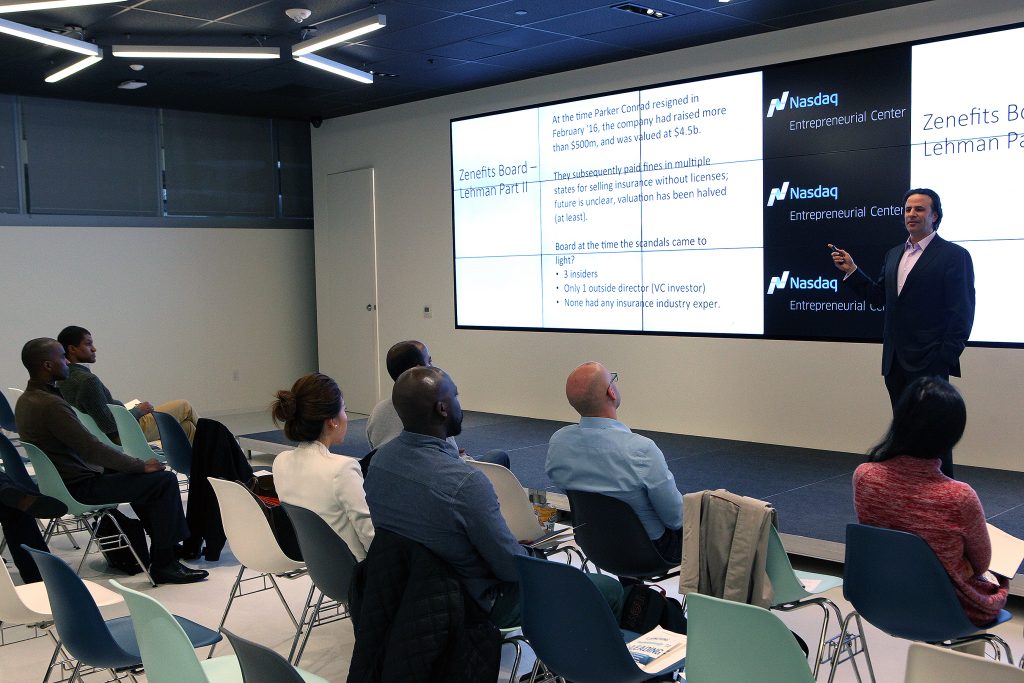An awful lot of attention has been afforded the raging SPAC marketplace. Some of the commentary has been objective and additive, while much of it has come from those who either don’t understand SPACs or those who have a conspicuous dog in the hunt. When you get beyond all the uninformed, conflicted stuff, fast-tracking a company from privately held to publicly traded has both benefits and detriments – full stop. In the midst of any mania, facts and precedent are often cast aside. But experienced investors know better than that; they focus on issues that are largely ignored by others. So, first a few high level observations, and then some practical takeaways from my own experience.
Most are small-cap. The overwhelming majority of public companies are small-caps, and the same is true for companies that consummate SPACs. For example, the median market cap of the 64 companies that de-SPACed in 2020 is approximately $1 billion. Why does that matter? Investors know that even small-caps that have been operating for years as public companies are fraught with risk. When you take a private company and accelerate their approach to being publicly traded, the risk barometer moves north… quickly.
Preparation-lite. The SPACs my firm has interacted with were understandably overwhelmed by the merger process and undertook almost no preparations whatsoever to be a public company. In practical terms this means that internal audit, compliance, reporting, and governance mechanisms are, at best, skeletal, and, at worst, virtually nonexistent. The good news is that several CEOs and board members with whom I’ve conferred are expressly cognizant of their knowledge gaps, and they know the learning curve will be steep. The bad news is that others I’ve spoken with believe that the transition to public company life is much ado about nothing. Beware small-cap officers and directors who don’t know what they don’t know.
Oversight? My firm has interacted with SPACs with some highly experienced small-cap board members, where management understands the need to have objective, proactive, value-added governance. I’ve also spoken with several board members who, though inexperienced, have embraced their lack of preparation and lack of governance knowledge, and are keen to remedy both in short order. But several executives I’ve spent time with either don’t seem to care at all about corporate governance, or they feel they’ve solved the problem by loading up their small-cap companies with large-cap board members. Seasoned small-cap investors know to be very leery of the latter, and they also know that “governance-lite” is the reason most shareholder activism is in small-cap companies.
Reading past all the sensationalism, SPACs are not new, and they are perfectly credible financing mechanisms. Is the current trajectory sustainable? Probably not. But particularly for non-technology and non-life science companies – those smaller growth companies that might otherwise have a less certain road to a traditional IPO – SPACs can be a terrific choice if they find the right fit. And just like with companies that go public through traditional IPOs, some SPACs will become great success stories and others will fail.
Now, about that acronym.
One risk seems clear to me from comparing the pre-IPO companies my firm advises to the SPACs, and it arises out of a determination we often used to focus on when I was a fund manager.
Some small-caps look and feel to institutional investors like “real public companies,” while others are much more like “private companies with ticker symbols” or PCWTS. Savvy investors have learned the hard way to approach PCWTS with extreme caution, and their costs of capital, institutional sponsorship, and valuations reflect the same.
PCWTS have some shared attributes:
- Officers and directors with little/no public company experience
- Websites and investor presentations that are amateurish and/or hyperbolic
- Irregular/poorly calibrated communication
- Quarterly earnings calls that evidence incomplete/misguided preparation
- Needlessly dilutive financings and/or late regulatory filings
- Unusual service provider selections
- 1-on-1s with management that convey a lack of capital markets/regulatory awareness
Most of the de-SPACs my firm has interacted with are PCWTS. It’s not a close call. I’m not suggesting that this is true for all de-SPACs, and I’m not even suggesting it’s true for most of them. It’s just been my personal experience in 2020 and 2021.
Unless the officers and directors of PCWTS figure out what they don’t know – and endeavor to learn those things as fast as possible – their small-cap life is not going to be profitable or enjoyable. The buy-side has seen this movie over and over… and over again.
When the dust settles from a SPAC, investors don’t really care how they got to be a public company. They are going to be judged like every other public company, and they won’t get any grace period. Astute management teams and boards will realize that the SPAC process – though complex, time-consuming and somewhat nerve-wracking – was actually the easy part. The hard bit is the de-SPACing: the relentless accountability of being a public company.
To those companies that didn’t have time to adequately prepare for public company life, be smart: (1) pick out some publicly traded peers that are 2-3x your current market cap, and start emulating them; (2) reach out to some experienced investors and have them recommend expert, small-cap investor relations counsel so you avoid communications missteps; (3) make sure your board members attend some foundational corporate governance continuing education programming ASAP; and (4) if you’re shepherding a public company for the first time as CEO, find a mentor who has successful experience running a public company your size.
I innately root for all legitimate businesses to succeed, and any legitimate financing mechanism that helps them. But there is a danger that SPAC euphoria will grossly simplify what it takes to succeed as a public company. In reality, there is nothing simple about it, and experienced investors can spot PCWTS from a mile away.
__________________



